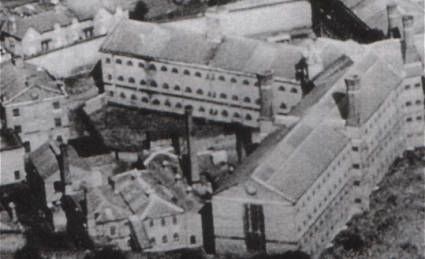The Jigsaw Murders
We do seem to have a preoccupation with giving heinous serial killers “catchy” nicknames, and every police procedural show has the obligatory boss detective groaning at whatever the newspapers have cooked up moniker wise.
Just a quick google brings up names like Bondage Killer, Chessboard Killer, Toyboy killer, Japanese Bluebeard (yes, really) and many others, but the one that I thought I would mention is a murderer known as The Jigsaw killer.
Now, without meaning to sound disrespectful to the two women whose lives he took, I thought maybe he had used an actual jigsaw in the process, or did he leave a jigsaw “piece” by each body? Yes, I have perhaps watched too many cop shows…but no, the reason for that particular epithet was to do with the puzzle that the investigators were met with when the bodies were found.
This is pretty nasty, so you have been warned.
Dr Buck Ruxton was born in India, 1899 as Bukhtar Hakim, and in 1925 under an arranged marriage, was wed to a Parsi woman, although this did not appear to last long as a year later he had moved to Britain to continue his medical studies having qualified as a Doctor in India a few years previously. When in 1927, he moved to Edinburgh to work towards becoming a surgeon, he met a lady by the name of Isobel (or Isabella depending upon which account you read), she was officially married to a Dutchman but had left him after just a few weeks of matrimony and was living under her maiden name of Kerr when she met the Indian doctor.
There is nothing documented to state that either had divorced their respectives spouses, but very soon he had changed his name to Buck Ruxton, and she was calling herself Mrs Ruxton, a child was soon to follow.
Moving to Lancaster, Ruxton established himself as a friendly and respected General Practitioner and after their third child was born, they employed a nurse maid called Mary Jane Rogerson to help with the family. All was not sweetness and light behind closed doors however as Ruxton was incredibly jealous and had started to believe that his “wife” Isobel was having affairs with multiple men. This building up of resentment would cause multiple fights, often resulting in Ruxton beating the mother of his children, her leaving, and then returning when he would beg her to come home. In fact the records state that Isobel tried to take her own life in 1932, but with what subsequently happened, one cannot help but wonder if that was truly the case.
In early September 1935, she went to Blackpool to see the lights and to visit family who lived there, upon her return to Lancaster it seems that Ruxton had built himself up into a swirling pool of angry paranoia and killed her. The next person to suffer was 20 year old Mary Jane, the housekeeper, the belief is she saw him murder her mistress and so she had to die too.
On the 29th September 1935, a young woman walking over a bridge in Moffat, Dumfriesshire found a parcel that had a decomposing human arm protruding from it…as the police started to poke around various other body parts were found. Forensics was still in it’s infancy at this point, but the scientist Professor John Glaister established that they were the parts of two different women. The identification process was hard however as the killer had removed all the parts which would be used to make composite drawings or obtain dental records -they had cut away the eyes, ears, skin, lips and removed teeth.
To illustrate how fast this particular way of obtaining information on a murder victim was progressing, they even employed the services of an entomologist to work out the rough time of death – a technique which is pretty common place now.
Mary Jane was the first to be positively identified, even though the police also knew that 35year old Isobel was missing – it was the obvious conclusion that the other remains belonged to her but they had to be sure before they arrested the well respected doctor, Buck Ruxton.
To cut a long story short, the evidence mounted up and he was taken into custody and on March 13th 1936 was sentenced to death. Reading newspapers from the time, the Aberdeen Press and Journal makes an interesting supernatural link in pointing out how the number “13” factored heavily. He was arrested on October 13th, he was committed for trial on December 13th and received his notification of punishment on March 13th.
Despite the guilt being pretty unequivocal (read the court transcripts if you wish to learn more), residents of Lancaster still tried to appeal for clemency, and Ruxton himself kept proclaiming his innocence, right up until he was hanged by Albert Pierrepoint on the 12th May 1936.
You may think that this was an innocent man, executed unfairly, that the jury was swayed by technical science rarely heard of, but after his death a letter he had lodged with that was only to be opened after his death, and if he was acquitted, to be returned to him which said –
“I killed Mrs Ruxton in a fit of temper because I thought she had been with a man. I was mad at the time. Mary Jane Rogerson was present at the time. I had to kill her."











